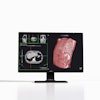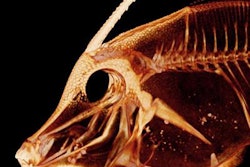Monday, November 28 | Approximately 1:30 p.m.-2:00 p.m. | RCC23D | Room S501ABC
This course, the last in Monday's 3D Printing: Clinical Applications I session that runs from 12:30 p.m. to 2:00 p.m., is a how-to for creating a collaborative 3D printing lab in today's environment of rapidly accelerating technology development."The key objectives of this presentation are to provide a basic understanding of the resources and infrastructure needed to create a collaborative 3D printing lab in a department of radiology, as well as to understand the potential patient and organizational benefits of this centralized 3D printing lab approach," Dr. Kent Thielen, from the Mayo Clinic in Rochester, MN, told AuntMinnie.com.
The Mayo Clinic's radiology department has built a centralized printing lab that broadly supports the organization's anatomic 3D printing needs, assisting colleagues from several other departments in a collaborative fashion, according to Thielen.
Following the 2013 centralization of the lab in the radiology department, the group has seen exponential growth in demand for 3D printing services. Fortunately, many of the workflows associated with 3D printing and anatomic modeling already exist in radiology, such as quality control and archiving of datasets, he noted.
"Concentrating this effort in a single location allows printers to be efficiently used and well-maintained," he said. "Now is a critical time for radiology as a specialty in that we have a window of opportunity to solidify radiology as the provider of these services."
3D-printed models are really just another way of displaying the imaging dataset, Thielen said. With new developments in augmented reality and other technologies, new ways to show these data will appear soon. And radiology must be ready.
"For radiology to maintain its role as a provider of complex image acquisition and its associated presentation, we need to seize the current opportunity before it's lost," he said.


















